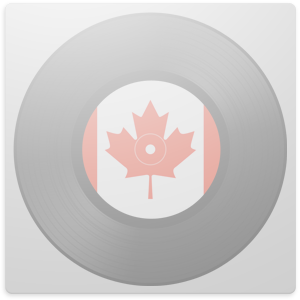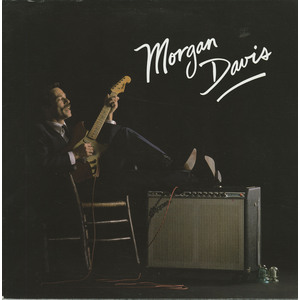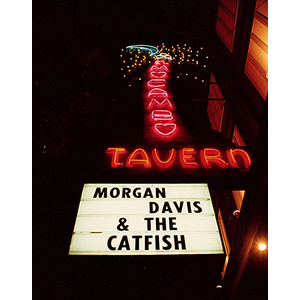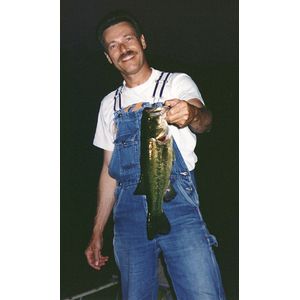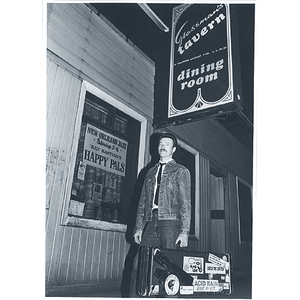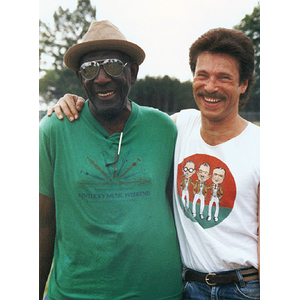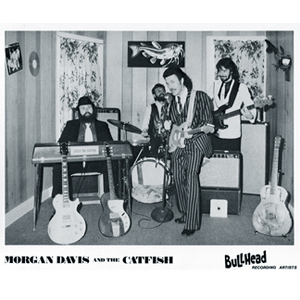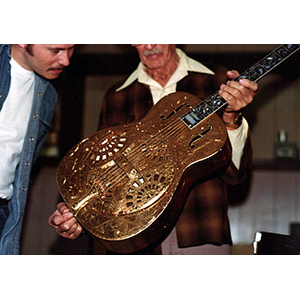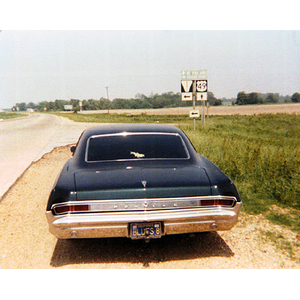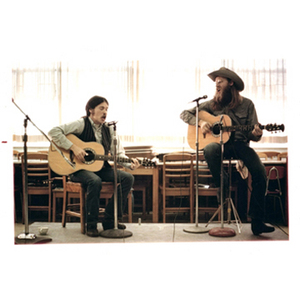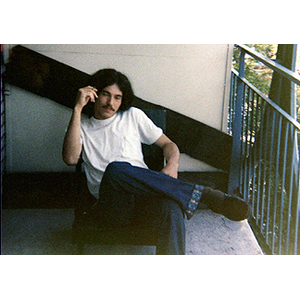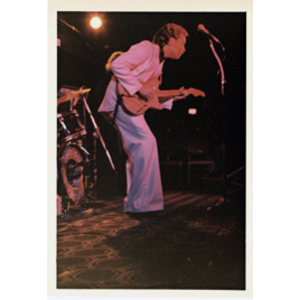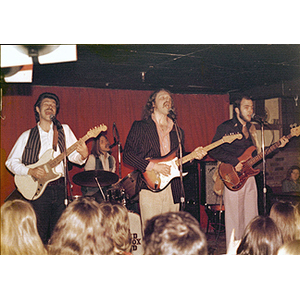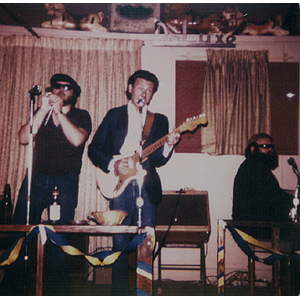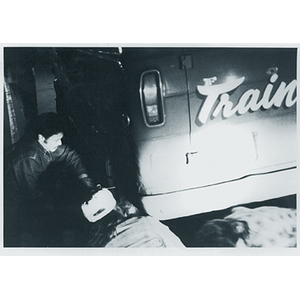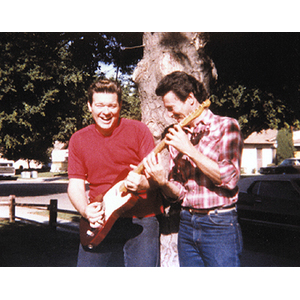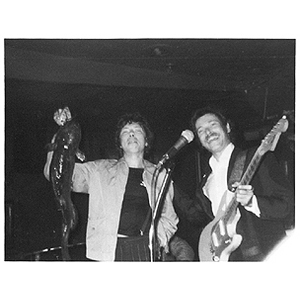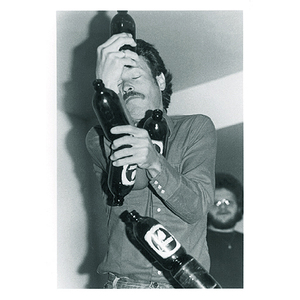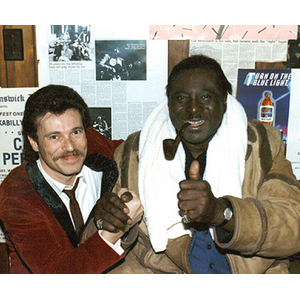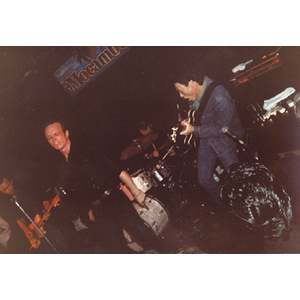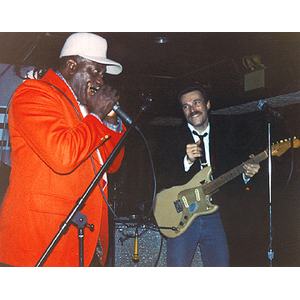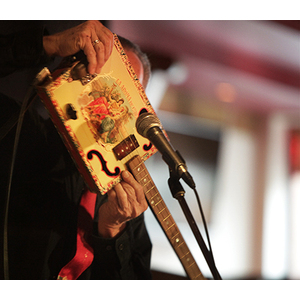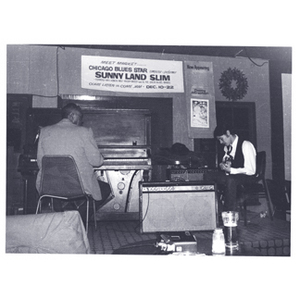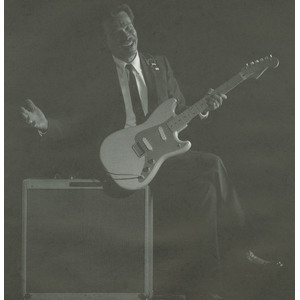Davis, Morgan
Websites:
https://morgandavis.com/
Origin:
Detroit, Michigan, 🇺🇸 → Toronto, Ontario → Lunenburg County, Nova Scotia, 🇨🇦
Biography:
Morgan Davis is one of Canada’s foremost bluesmen — a masterful guitarist, songwriter, and storyteller whose career has spanned nearly six decades and several thousand stages across North America and Europe. From his roots in Detroit and California to his musical coming-of-age in Toronto and his longtime home in Nova Scotia, Davis has become a living bridge between traditional Delta blues and the contemporary Canadian scene.
Born in Detroit, Michigan, in the early 1950s, Davis grew up with a front-row seat to the golden age of rhythm and blues. His early soundtrack included Jimmy Reed, Chuck Berry, Fats Domino, and Ike & Tina Turner — all blaring from car radios and corner jukeboxes. In 1962, his family moved to southern California, where surf music dominated, but Davis found his inspiration elsewhere: Bob Dylan led him to the work of Woody Guthrie, Leadbelly, Pete Seeger, and Blind Lemon Jefferson. He soon immersed himself in the growing counterculture, attending concerts by the Doors, Grateful Dead, Buffalo Springfield, and Mothers of Invention, and picking up guitar at age 16.
After graduating high school in 1965 and enrolling at Long Beach State College, Davis became active in the anti-war movement and SDS. Rejecting his draft deferment during the Vietnam War, he made the life-altering decision to emigrate to Canada, seeking a country not just politically neutral, but culturally vibrant.
He arrived in Toronto in the late 1960s, just as the local blues and folk circuit was catching fire. The city’s clubs played host to Chicago greats like Muddy Waters, Howlin’ Wolf, Buddy Guy, and Junior Wells. Davis absorbed their performances with reverence and studied the craft from the front row — also seeing country blues legends like Son House, Bukka White, and Johnny Shines in intimate settings. He lived for a time at the now-infamous Rochdale College, Toronto’s high-rise haven for artists and activists, where jam sessions and experimentation were constant.
Early on, Davis joined the first band led by David Wilcox, gaining formative experience that deepened his feel for roots and rhythm. He later performed in a retro rock and roll outfit called the Rhythm Rockets, before launching his own blues group, Knights of the Mystic Sea. The band’s lone 45 — Pretty Woman and Ugly Men b/w Harpoon — was recorded circa 1974 and privately pressed on Gyp Records in a run of just 100 copies. Featuring Davis on guitar and vocals, with Fraser Finlayson on harp and vocals, Jimmy Reed on bass (not the Mississippi legend), and Danny Haugh on drums, the record is now a prized piece of Canadian blues ephemera. At the time, the band avoided calling themselves a "blues" act — opting for velvet tuxedos and calling it "dance music" to secure gigs — but once on stage, they played nothing but the blues.
Throughout the 1970s and ’80s, Davis built his reputation through relentless touring, sharp songwriting, and an ever-expanding list of collaborations. He opened for Willie Dixon, Albert King, John Hammond, and John Lee Hooker; jammed with Muddy Waters, James Cotton, and Johnny Shines; and backed Dr. John, Sunnyland Slim, Snooky Pryor, Willie “Big Eyes” Smith, and Hubert Sumlin. His songwriting talent gained national attention in 1988 when Colin James covered “Why’d You Lie,” bringing Davis’s name to mainstream audiences.
In the 1990s and 2000s, Davis released a string of critically praised albums including Morgan Davis (1990), Blues Medicine (1999), and the Juno Award–winning Painkiller (2003). His style fuses stripped-down electric blues with lyrical wit and raw soul. A hallmark of his live show is the use of the three-string cigar-box guitar, a uniquely gritty and expressive instrument that has become part of his signature sound.
For over 20 years, Davis has made his home in Lunenburg County, Nova Scotia, living close to the ocean while continuing to tour across Canada. In the Maritimes, he’s earned a devoted following, especially at venues like Bearly’s House of Blues in Halifax, where he became a regular fixture.
A true road warrior, Davis averaged nearly 200 shows per year until the COVID-19 pandemic forced a rare pause. Even now, as touring resumes, he continues to bring traditional and original blues to new audiences with humility, grit, and humour. His legacy as a performer, historian, and advocate of the blues is unmatched — and as he often says, he still hopes to be "playing the blues until he drops."
-Robert Williston
Awards & Recognition
Juno Award – Blues Album of the Year for Painkiller (2004)
Maple Blues Awards:
Recording of the Year – Painkiller (2004)
Songwriter of the Year (1999, 2004 – SOCAN)
Male Vocalist of the Year (2004)
Producer of the Year – with Alec Fraser (2004)
Producer of the Year – Blues Medicine (1999)
Toronto Blues Society:
Acoustic Artist of the Year (2000)
Blues With a Feeling Award (1996)
Jazz Report Awards:
Blues Artist of the Year (1994, 1995)
DownBeat Magazine:
One of the Top CDs of 2018 – for Home Away from Home

